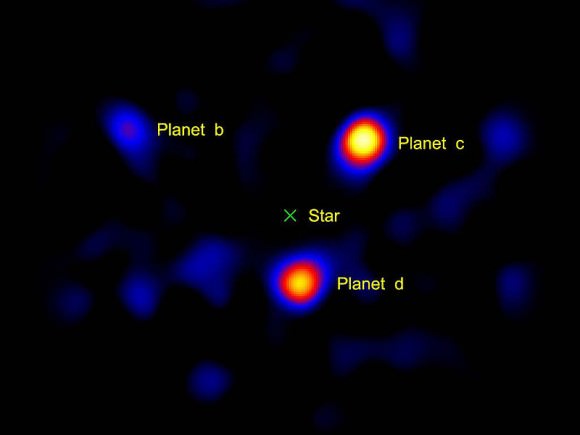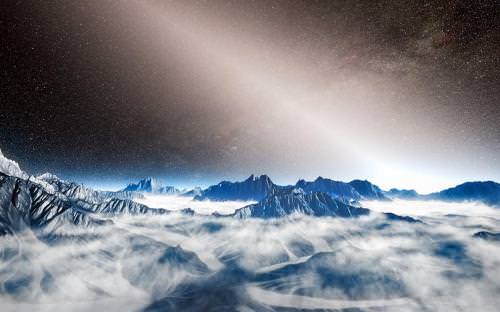If you’ve ever stood outside after twilight has passed, or a few hours before the sun rises at dawn, then chances are you’ve witnessed the phenomenon known as zodiacal light. This effect, which looks like a faint, diffuse white glow in the night sky, is what happens when sunlight is reflected off of tiny particles and appears to extend up from the vicinity of the Sun. This reflected light is not just observed from Earth but can be observed from everywhere in the Solar System.
Using the full power of the Very Large Telescopic Interferometer (VLTI), an international team of astronomers recently discovered that the exozodiacal light – i.e., zodiacal light around other star systems – close to the habitable zones around nine nearby stars was far more extreme. The presence of such large amounts of dust in the inner regions around some stars may pose an obstacle to the direct imaging of Earth-like planets.
The reason for this is simple: even at low levels, exozodiacal dust causes light to become amplified intensely. For example, the light detected in this survey was roughly 1000 times brighter than the zodiacal light seen around the Sun. While this exozodiacal light had been previously detected, this is the first large systematic study of this phenomenon around nearby stars.
The team used the VLTI visitor instrument PIONIER which is able to interferometrically connect all four Auxiliary Telescopes or all four Unit Telescopes of the VLTI at the Paranal Observatory. This led to not only extremely high resolution of the targets but also allowed for a high observing efficiency.

Credit: ESO/G. Hüdepohl
In total, the team observed exozodiacal light from hot dust close to the habitable zones of 92 nearby stars and combined the new data with their earlier observations.
In contrast to these earlier observations – which were made with the Center for High Angular Resolution Astronomy (CHARA) array at Georgia State University – the team did not observe dust that will later form into planets, but dust created in collisions between small planets of a few kilometers in size – objects called planetesimals that are similar to the asteroids and comets of the Solar System. Dust of this kind is also the origin of the zodiacal light in the Solar System.
As a by-product, these observations have also led to the discovery of new, unexpected stellar companions orbiting around some of the most massive stars in the sample. “These new companions suggest that we should revise our current understanding of how many of this type of star are actually double,” says Lindsay Marion, lead author of an additional paper dedicated to this complementary work using the same data.
“If we want to study the evolution of Earth-like planets close to the habitable zone, we need to observe the zodiacal dust in this region around other stars,” said Steve Ertel, lead author of the paper, from ESO and the University of Grenoble in France. “Detecting and characterizing this kind of dust around other stars is a way to study the architecture and evolution of planetary systems.”

Credit: NASA/JPL-Caltech/Palomar Observatory.
However, the good news is that the number of stars containing zodiacal light at the level of our Solar System is most likely much higher than the numbers found in the survey.
“The high detection rate found at this bright level suggests that there must be a significant number of systems containing fainter dust, undetectable in our survey, but still much brighter than the Solar System’s zodiacal dust,” explains Olivier Absil, co-author of the paper, from the University of Liège. “The presence of such dust in so many systems could therefore become an obstacle for future observations, which aim to make direct images of Earth-like exoplanets.”
Therefore, these observations are only a first step towards more detailed studies of exozodiacal light, and need not dampen our spirits about discovering more Earth-like exoplanets in the near future.
Further Reading: ESO


an international team of astronauts??? Don’t you mean astronomers?
It’s just a shame that these errors continue to happen too often, almost in a daily basis. A few misplaced letters it’s all it takes to drive an entire article’s credibility out of the window leaving the reader confused and dismissive about the true contents of the information passed on.
By double checking the writing prior to publishing it would overcome this type of issue and certainly would promote the importance the fields of astronomy, cosmology and astrophysics deserve to be treated in this day and age.
You mean to say “on a daily basis”, not “in”, right? 😉